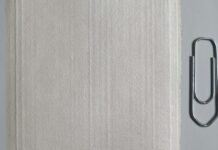Electrically conductive prints on fabrics form the foundation for functional textiles with electronic capabilities, commonly referred to as smart textiles. To ensure lasting conductivity when faced with external mechanical forces such as stretching, pressure, and bending, conductive inks and binders need to be effectively matched. The DITF (German Institute for Textile and Fiber Research) is developing new ink formulations, including elastic inks for enhanced textile electronics integration, that fulfill these criteria.
Smart textiles are utilized in various sectors, including sports, fashion, and the automotive industry. These textiles with embedded electronics can monitor vital signs and performance metrics while allowing the fashion industry to incorporate interactive features into clothing. In the automotive sector, they enhance both passenger comfort and safety.
Traditionally, the most frequently used conductive components in textiles have been wrapped yarns and tension-relieved conductive yarns arranged in loops, providing reliable electrical flow even in high-stress textiles. However, their complex production makes them costly and not fully suitable for mass-market applications. In contrast, printing conductive structures on textile surfaces through screen printing or chromojet technology—a digital spray printing method—is a more cost-effective approach.
Despite their advantages, producing printed conductive textiles presents several challenges. A significant issue is maintaining the conductivity of printed materials while ensuring the flexibility and softness of the fabric. Additionally, the durability of the prints may decline, particularly with frequent washing or mechanical stress. Movement or stretching can lead to cracking or tearing of the prints. Electrical conductivity can be compromised even with minimal stress, as the stretching of the conductive layer may not be reversible. Additionally, repeated stretching can weaken the adhesion between the printed application and the textile, leading to poor long-term stability. The integration of electronic components in textiles is often hindered by unreliable connections between the conductive elements and the electronics.
To tackle these challenges, the DITF is pursuing innovative solutions. The Color- and Functional-Printing Working Group is focusing on developing new ink and paste formulations that utilize conductive particles and elastic binders. Their objective is to enhance the elongation properties of the prints while ensuring strong electrical conductivity. The elastic characteristics of the binder are primarily influenced by the auxiliaries and additives employed. The DITF is assessing the interactions among these components to inform the creation of new elastic and highly conductive inks, specifically elastic inks for enhanced textile electronics integration.
The hysteresis properties of these new ink formulations are crucial. Hysteresis refers to a material’s ability to retain its properties under repeated stress or strain. Properly matched hysteresis enhances the conductivity of printed structures even during continuous mechanical stress, allowing suitable materials to adapt to the fabric’s movement without losing conductive qualities.
The research team at the DITF aims to deepen understanding of the interactions among conductive particles, binders, additives, and textile auxiliaries to develop highly conductive inks and pastes. This advancement will enable the production of resilient print coatings suitable for various textile substrates and applications, ensuring reliable conductivity.
Achieving these goals could lead to a reduction in the costs associated with the mass production of textile electronics.































